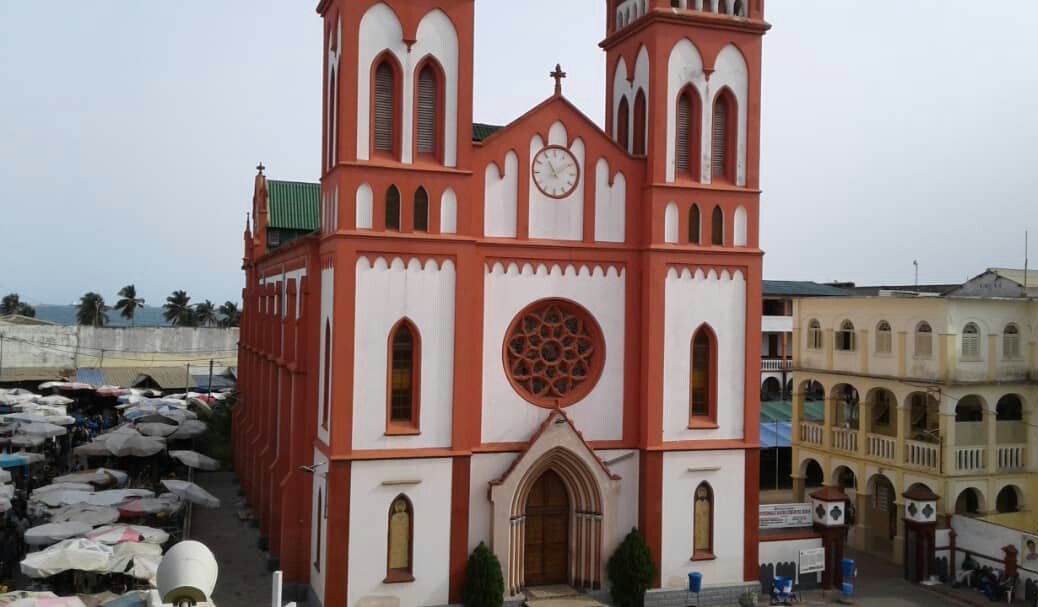The Architectural Splendor of Lomé Cathedral Attracts Many Tourists

While in Togo, I visited the Sacred Heart of Jesus Cathedral. Also known as the Cathedral of Lomé, this picturesque church was built by the Dutch missionaries in 1901. Today, the neo-Gothic cathedral is surrounded by Togo’s biggest market, popularly known as Grand Marché.
When I showed up, the door was open for worshipers. Before I walked in, I skimmed through writings on the notice board placed at the entrance. As I did so, a few women from the surrounding communities greeted me in French before entering the premises.
The architectural splendor of the Cathedral of Lomé attracts many tourists. One hawk-eyed tour guide, namely Bebeto, seats on a strategically located bench in anticipation of the arrival of clients from abroad. He offers tour guiding services at a modest fee of USD 10 per person, but the African in me slashed his payment by 50%.
Around the world, cathedrals attract tourists interested in cultural heritage and the allure of beckoning architecture. However, this brood of visitors should not be confused with faith-based tourists, even though the fabric of religious tourism is cultural.
During my guided tour, Bebeto gave me a historical account of the building and detailed the introduction of Christianity during the German occupancy. In addition, he highlighted events that unfolded when Pope John Paul II visited the cathedral in 1985.
Climbing the tall belfry through a steep, old staircase drove chills down my spine. On my way out, I saw the aforementioned women reciting a Rosary. Another woman, dressed in a white robe, was preparing the altar for that evening’s mass. Mass is a popular Roman Catholic liturgical celebration.
As mentioned above, Togo’s iconic cathedral is surrounded by the bustling Grand Marché de Lomé. Like the cathedral, the market is popular with tourists. Most of them, myself included, combine both attractions in their itineraries.